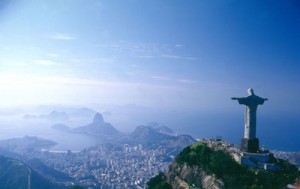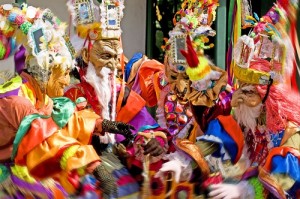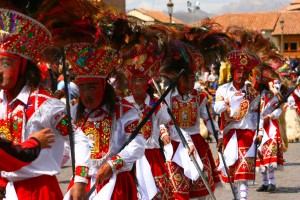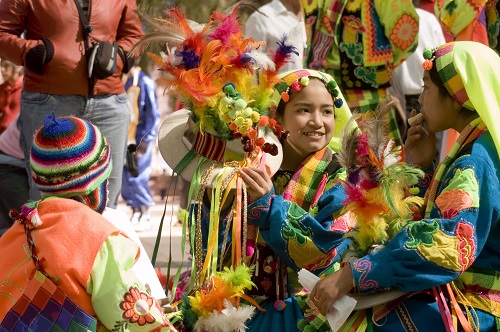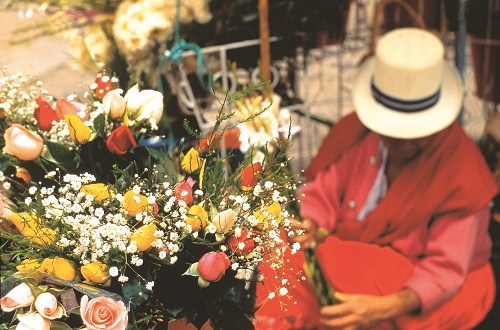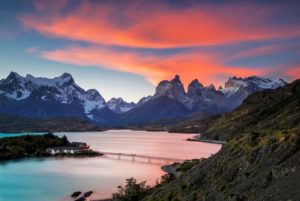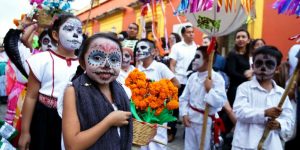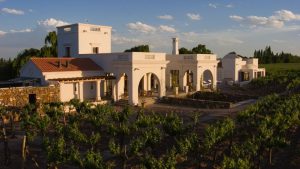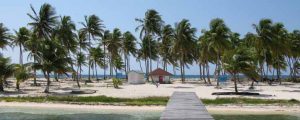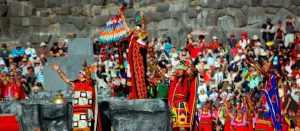As all the schools go back we take a look at how Latin America has been celebrating Easter, known as Holy Week (‘Semana Santa’ in Portuguese).
Religion is an integral part of life across all Latin American countries. Ever since the first European settlers brought Christianity to the so-called ‘New World’ it’s been a central pillar of societies, now as much a part of the region as the native beliefs it exists alongside.
Easter represents the peak of the Catholic calendar and is a time to celebrate, revere and make pilgrimage. Special Masses and processions through towns abound, but Latin America also knows how to party!
Brazil
Several towns across Brazil hold a Procissão do Fogaréu (Procession of the Torches), the most famous of which is Goiás Velho. Procissão do Fogaréu is a re-enactment of Christ’s arrest in the olive garden, with hooded men bearing lit torches to signify soldiers.
The town of Nova Jerusalém holds a Paixão de Cristo (Passion of Christ) play in one of the world’s largest open-air theatres. With 9 sets and around 8,000 spectators at every performance, the audience follows the cast across the different sets as the story traces the last few weeks of Christ’s life, finishing with the Ascension into Heaven.
Visit Brazil with Latin Odyssey
View our Brazil picture gallery
Argentina
Many Argentinians make a pilgrimage to the town of Tandil during the Holy Week, to see the Via Crucis (Way of the Crosses) and the 14 groups of stone statues at Mount Calvary on the subject of Christ’s crucifixion.
Lava-Pés (Washing of the Feet) is a ritual that recalls Christ washing the feet of His apostles – twelve citizens from all areas of society have their feet washed by priests. Our current Pope Francis, as a native of Argentina, has participated in Lava-Pés in his home city of Buenos Aires.
Palm Sunday is known as Domingo de Ramos (Branch Sunday), with olive branches blessed and handed out by priests instead of palms.
Visit Argentina with Latin Odyssey
View our Argentina picture gallery
Peru
Ayacucho in Peru has 33 churches – one for every year of Christ’s life – and here the Holy Week is celebrated particularly intensely with festivals that attract national and international visitors. Masses, processions and icons come from each of the churches and make their way through streets and squares, culminating in joyous celebrations on Sunday as Christ’s resurrection is portrayed with images of Christ carried back through the town.
It’s a longstanding tradition that during processions red ñucchu flowers are thrown out – their vivid colour symbolises the blood of Christ. Food also plays a huge part in celebrations – it’s traditional to have some of each of 12 traditional dishes (one for each of the apostles).
The Inca capital of Cuzco not only has world-renowned celebrations, but also a famous statue: Señor de los Temblores (Lord of the Earthquakes) who made a special appearance during an earthquake in 1650 and has been revered as the city’s patron ever since. Uniquely, the statue forms part of the Easter processions and is carried around the cathedral and surrounding square.
Chile
The Fiesta Quasimodo (Feast of Quasimodo) is an Easter celebration particular to Chile – the name comes from the first word of a Latin prayer that opens Mass on the Sunday after Easter. On this day, priests traditionally take Communion to members of the congregation who were unable to travel to church to receive it during the Easter period itself. The priests ride in special wagons with guards, who are known as quasimodistas.
Rodeos and horsemanship contests may also form part of the celebrations, taken part in by the huasos – Chilean countrymen who are highly skilled on horseback.
Visit Chile with Latin Odyssey
View our Chile picture gallery
Ecuador
Holy Week celebrations in Ecuador combine national festivities with smaller individual events that are unique to local areas. In the capital, Quito, the procession of Jesus de Gran Poder sees a Christ icon carried by around 800 participants through the city to the cathedral.
Across the country you might see crosses being transported, costumed ‘devils’ being driven out, and even a procession of penitents being symbolically whipped. A customary Ecuadorian dish uses 12 varieties of grain, for the 12 disciples, and Christ is represented in the form of fish.
Visit Ecuador with Latin Odyssey
View our Ecuador picture gallery
